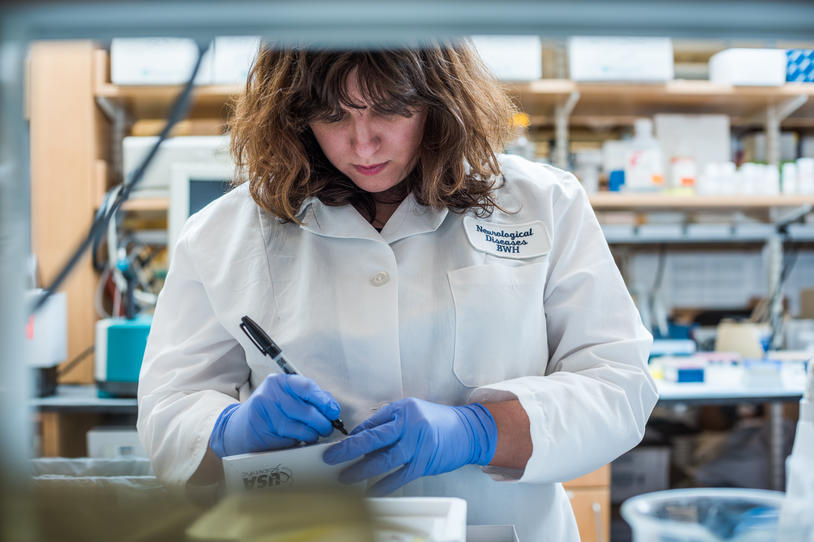
True to our mission of a world without Parkinson’s disease, The Michael J. Fox Foundation (MJFF) explores cures from all angles. Toxic factors in the environment may contribute to Parkinson’s risk. Recent grants are supporting four studies to investigate the connection between exposure to factors in the environment (e.g., pollution and pesticides) and disease.
Such information can be used to advocate for regulations limiting these exposures. Those protections may reduce some risk of Parkinson’s disease. [MJFF leads much of this advocacy as founder of the Unified Parkinson’s Advocacy Council of more than 20 partner organizations.]
Additionally, these connections provide the basis for biological studies. Scientists can explore the steps between exposure and symptom onset looking for places to stop the disease process.
Read below and click through for more on these four new projects.
- Exposures during Military Service
Samuel Goldman, MD; University of California, San Francisco
Service at some military bases and deployment sites is linked to greater risk of Parkinson’s disease.
Goldman and his team will review data from the Millennium Cohort Study (MilCo). It includes over 200,000 service members who complete surveys every three to five years on health and environmental toxicants encountered during military service and deployments.
MilCo provides the opportunity to investigate a range of exposures, some of which may also be relevant for a broader population. - Profiles of Geographic Parkinson’s Clusters
Susan Nielsen, PhD; Washington University in St. Louis
Geographic clusters of Parkinson’s — areas where more people develop the disease than expected — can provide clues about environmental causes.
Nielsen and her group will use data from more than 22 million Medicare recipients to find clusters of people diagnosed with Parkinson’s. They then will identify potential environmental exposures in that area and assess concentrations of those agents in local air, water and soil using publicly available data. - Influence of Today’s Pesticides on Disease
Beate Ritz, MD, PhD; University of California, Los Angeles
Science has had success in naming environmental disease drivers such as pesticides like rotenone and paraquat. But research must continue to examine new products for safety.
Ritz will lead a project reviewing data on types and location of pesticide use in California from 1974 to 2018 (more than 200 pesticides). They will compare that data with home and job address histories from volunteers in a large Parkinson’s study. This research may identify geographic clusters linked to use of some pesticides.
Additionally, the team will study how those exposures may change biology. Learning more about the biological pathways could help better understand disease even in people without these exposures. Much Parkinson’s biology is shared regardless of disease cause. - Air Pollution’s Impact on Parkinson’s Disease
Anna-Maija Tolppanen, PhD; University of Eastern Finland
Some studies have shown increased risk of Parkinson’s with exposure to air pollutants. (Read a paper out this month with such findings.) But more evidence on the effects of air pollution exposure on the onset of brain disease is urgently needed.
Tolppanen and her team will compare data from the Finnish Parkinson’s Disease Study — a study of more than 22,000 people with Parkinson’s and 148,000 control volunteers — and individual-level data on exposure to 16 different pollutants (e.g., smog, gases.
(MJFF is also funding Tolppanen to review prescription data for any therapies given for other conditions that may also help lower Parkinson’s risk.)
MJFF also has funded the California Parkinson’s Disease Registry, which collects data on Parkinson’s diagnoses across the state. That data could be useful for studies like these. The registry will soon make its de-identified data open to the scientific community.
While looking at environment is an important part of stopping disease, likely no exposure causes Parkinson’s on its own. Not everyone with these exposures develops disease. Scientists believe both genetics and environment contribute. Read more on causes of Parkinson’s disease.
Our landmark study the Parkinson’s Progression Markers Initiative (PPMI) is recruiting people with and without Parkinson’s to better understand disease risk. Take a short survey to see if you may be eligible.
Interested in learning more about activities to impact Parkinson’s policies and programs? Read our Updates from Washington and sign up for our policy network to receive more news and opportunities.
